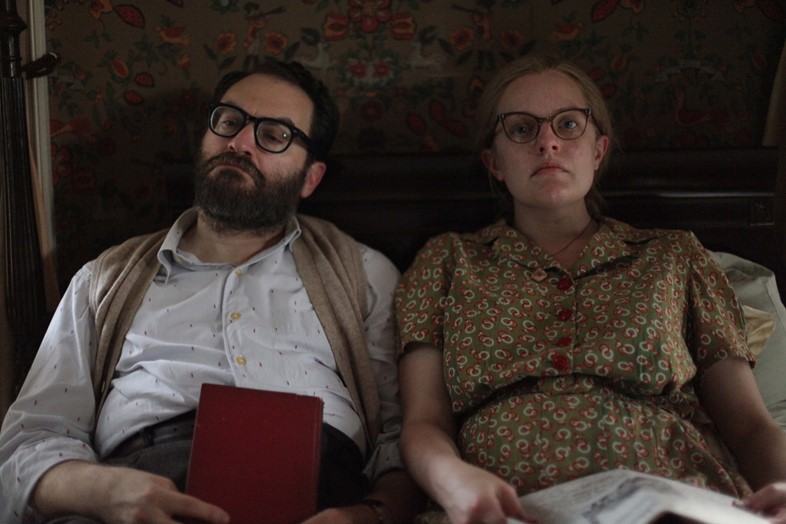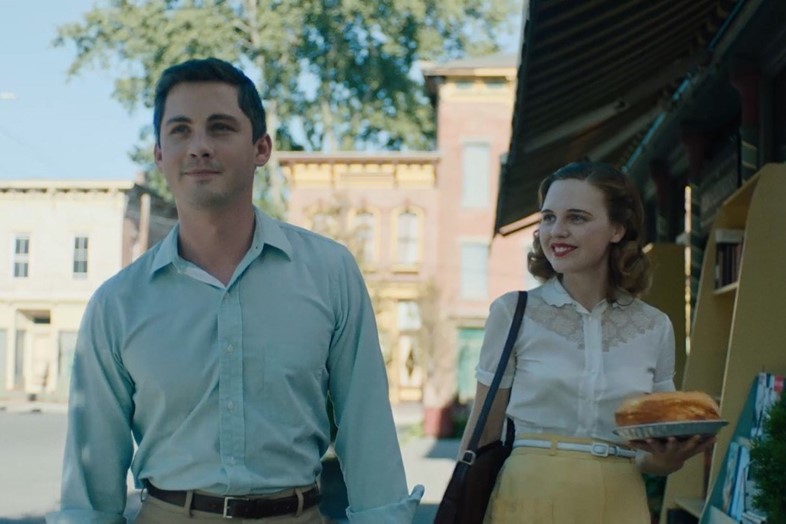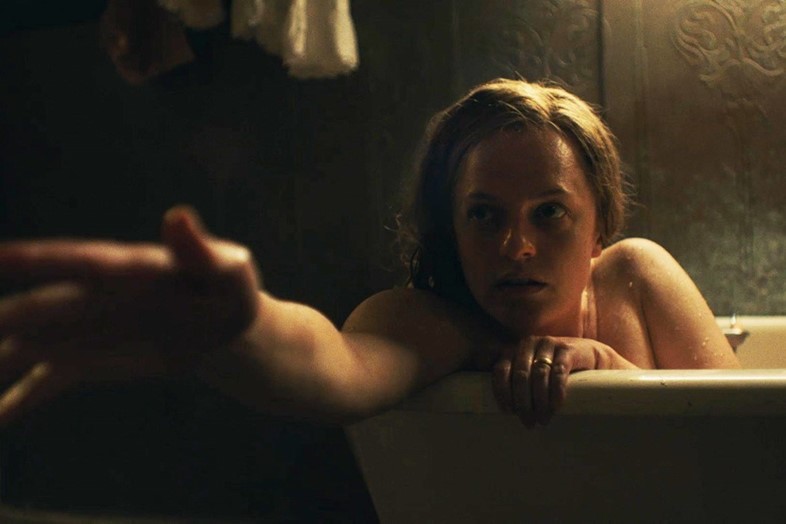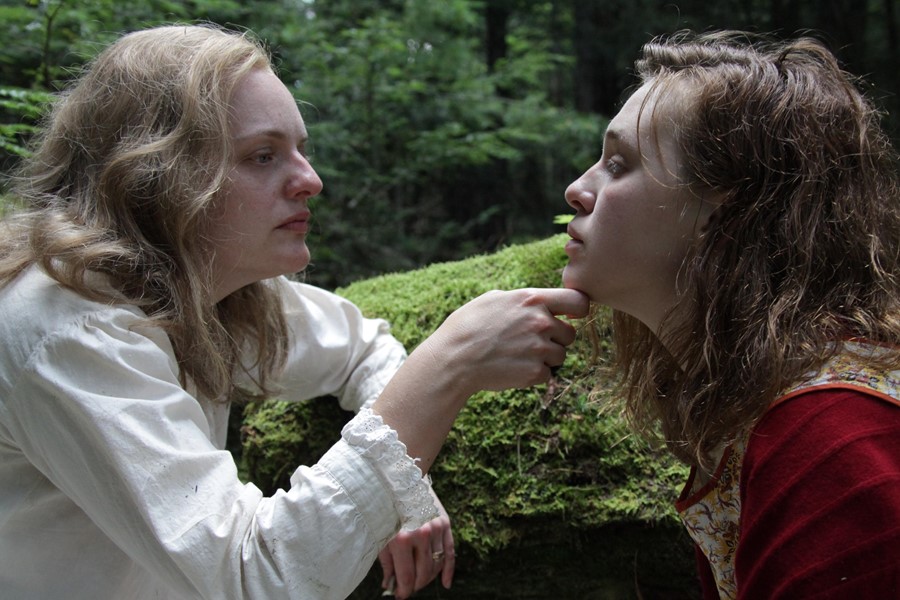Director Josephine Decker and actress Odessa Young talk their mind-bending new film Shirley, which sees Elisabeth Moss take on the role of American horror writer Shirley Jackson, and delivers thrills and chills in equal measure
When Josephine Decker first received the script for Shirley, a semi-fictional Shirley Jackson biopic penned by Sarah Gubbins after Susan Scarf Merrell’s novel of the same name, it felt like serendipity. “I’d just read Shirley’s final novel We Have Always Lived in the Castle, and was like, ‘Oh my God, Shirley’s amazing. I need to go read all of her work,’” the American director tells AnOther over the phone. “Then the script landed in my lap out of the blue. It was crazy timing.”
Decker, known for her avant-garde brand of independent filmmaking which plunges viewers into the tempestuous minds of her subjects through experimental sound and camerawork, presented her pitch for the film and soon found herself at the helm of what would be her first commercial movie. Shortly thereafter, she found her Shirley in the inimitable Elisabeth Moss, who embodies Jackson with a wonderfully frumpy physicality and wild-eyed unpredictability, in what is one of her best performances yet. “We showed Elisabeth the script and she loved it and came onboard, not only as Shirley but also as a producer,” Decker explains. “She’s so talented and has such a deep, mysterious grasp on reality. She has a whole universe inside of her eyes that she can play with.”

The film homes in on the much-mythologised doyenne of American horror in 1948, the same year that she skyrocketed to notoriety after her blood-curdling short story The Lottery was published in The New Yorker. Jackson and her husband, the literary critic Stanley Hyman (played by Michael Stuhlbarg of A Serious Man and Call Me By Your Name fame), are living in a creaky, old, ivy-covered house in Vermont. Stanley, a charismatic and lechy bonvivant, is a lecturer at Bennington College, while the hermetic and brilliantly mercurial Jackson is beginning work on her second novel, Hangsaman, inspired by the recent disappearance of a female student on campus. Theirs is a toxic relationship, all acerbic quips and wicked wit, and yet they are devoted to one another.
So far, so close to the truth, but the film veers off into fiction when young newlyweds Fred (Logan Lerman) and Rose (Odessa Young) appear on the scene. Fred, a bushy-tailed PhD graduate, will assist Stanley in his lecturing, while Rose, who is pretty and seemingly straightlaced in spite of her deep fascination for Shirley’s work, will study at the college. Things soon take a disconcerting turn, however, when Stanley cajoles Rose into assuming the role of housekeeper and carer for Shirley, who in turn prompts an unexpected awakening in the repressed young woman as they conspire to unearth the mystery of the missing student. What ensues is a blistering collision of reality and unreality, as Shirley ignites Rose’s fertile imagination and latent desire to rebel, while Rose comes to inspire the “lost girl” at the heart of Shirley’s novel.

The ascendant Australian actress Odessa Young, who was only 20 at the time of filming, is excellent as Rose, pulling the audience with her as she stumbles under Shirley’s spell. “We were so excited when we cast Odessa,” Decker affirms. “We found a Rose that had a lot of fight in her – we liked that freedom, that ferocity. Rose was always going to have a life beyond that first ‘1940s housewife’ version that we meet and Odessa was willing to go to that scarier, more vulnerable place. She was up against these incredible actors and yet she holds the movie; she’s the eyes through which you see the whole film, and she did it so well.”
Young, on her part, was thrilled to work with Decker. “I’d seen Josephine’s previous film Madeline’s Madeline and it was just kind of mind blowing. I was really curious to see how she made it, her process,” she tells AnOther. And what did she discover? “She’s kind of a magic person. Her way of filmmaking is all-encompassing, very spiritual and very esoteric. Watching the film for the first time, I noticed how she and Sturla Brandth Grøvlen, the cinematographer, had captured all of these hidden moments while we were shooting the scenes – like the little subconscious ticks that you have as a person, not even as an actor. It was a beautiful melting pot of all these things from real life and fiction, these elements of performance and of being.”

Hearing Decker discuss her approach to creating the astounding visual world of Shirley gives further insight into the spellbindly immersive effect of the film. “The movie is very complex: it moves from Rose’s perspective slowly into Shirley’s perspective, so you have to really balance all the different layers of whose mind you’re in when,” she says. “We had a lot of different approaches for shooting. The Shirley and Stanley scenes [marvellously theatrical, intellectual showdowns] are very action-based, for example – we would really let the physical movement define the camerawork.” Other camera wizardry included a technique that Decker and Grøvlen dubbed “creature”, where “the camera’s supposed to be like a baby that crawls; it sits very close to the body and if it wants to go to places it has to crawl along the furniture or floor to get there.”
They also worked hard to conjure two distinct universes: the one inside Shirley’s house, where most of the action takes place, and the town of Bennington beyond. Shirley and Stanley’s dwelling is always dimly lit, and brims with books and witchy symbology – a black cat, a caged yellow canary, a miniature replica of the Boy With Thorn statue – while the ever-sunny town and its squeaky clean inhabitants are somehow even more sinister. “When you leave the house and go to the town, you’re meant to feel like you’ve left the world of the movie, like in one of Shirley’s stories. We had a lot of fun digesting and jumping into all that,” Decker enthuses.
During the course of our conversation, the filmmaker reveals several other tricks she had up her sleeve in the realisation of this mind-bending film and its many layers – the real, the imagined, the dreamt. This ranges from the late addition of a voiceover of Shirley’s writing process at certain stages of the film, so that we're better able to trace the links between her novel’s development and her changing relationship to Rose, to some exercises Decker learned while studying at physical theatre school, which she did with the actors in order to establish the “physical vocabulary of the film”.
But, as with a magic trick, the joy of Shirley is in the experience, the wondery of watching it unfurl. This film, like Decker’s three preceding features, is hard to put into words. It’s so many things rolled into one: a period psychodrama about a time when (in Shirley’s words) “the world [was] too cruel to girls”; a heady study of the art of writing (one of the best Martin Scorsese says he’s ever seen, incidentally); a biopic that explodes outside the margins of the genre and merges the life of its subject with the singular fictional world she crafted. To conclude on a festive note, much like a Halloween candy haul, it’s sickening and delicious in equal measure, and demands to be consumed.
Shirley is in cinemas and on Curzon Home Cinema now.
